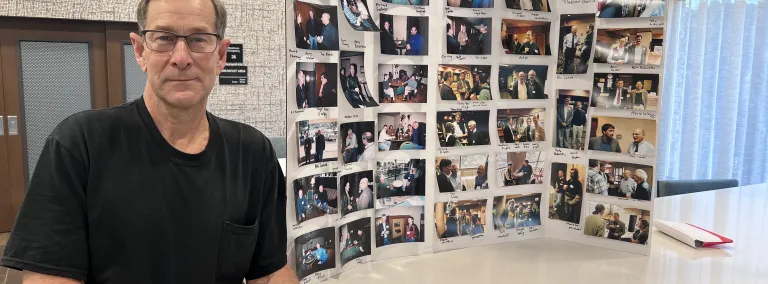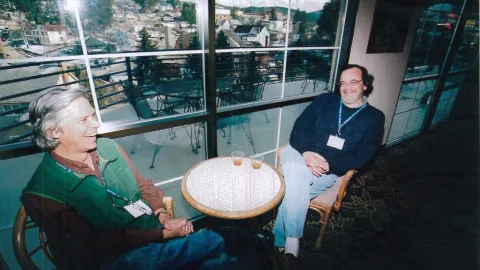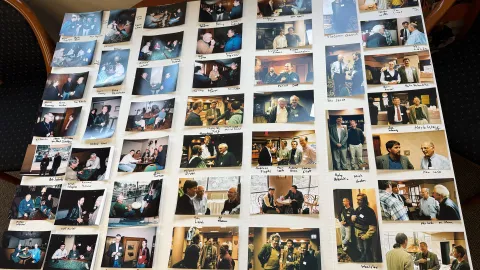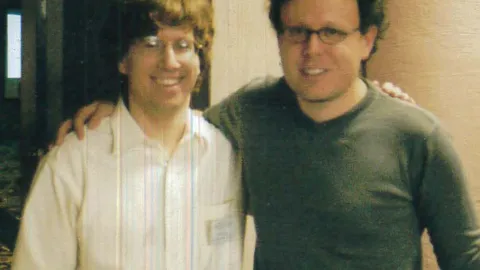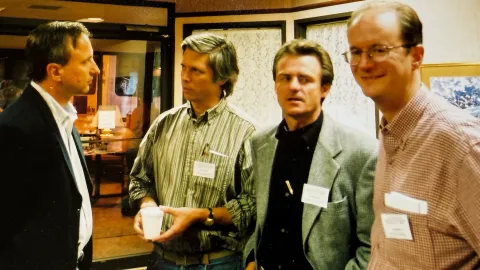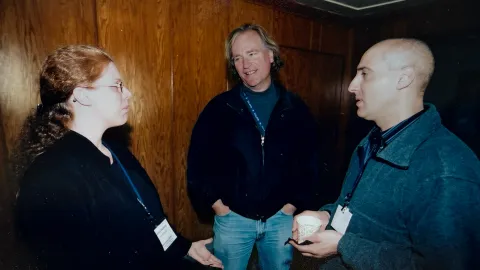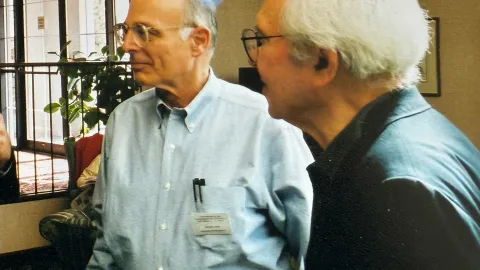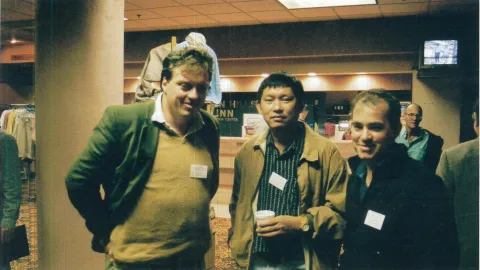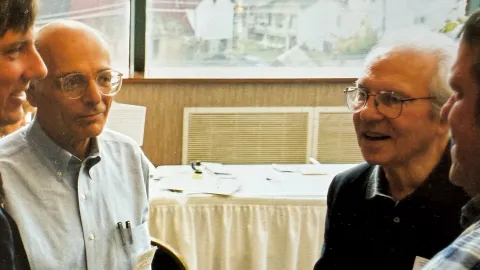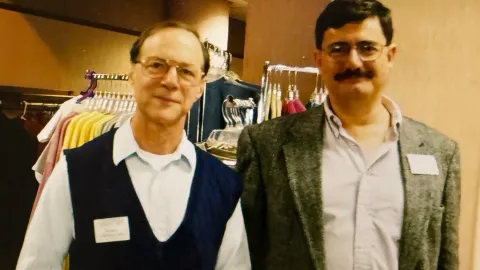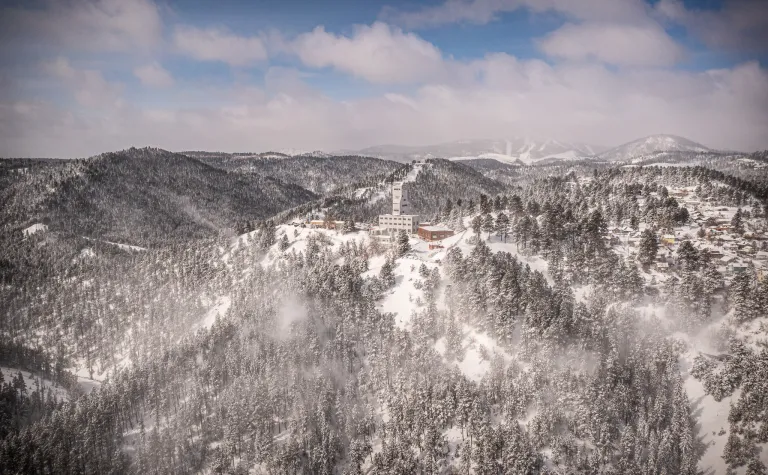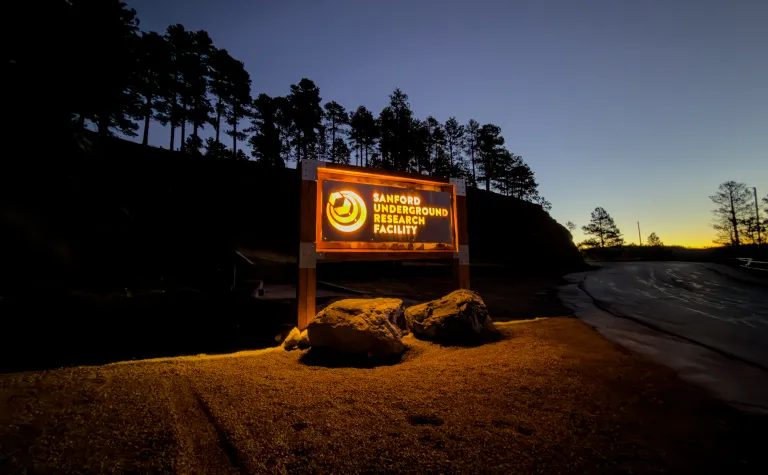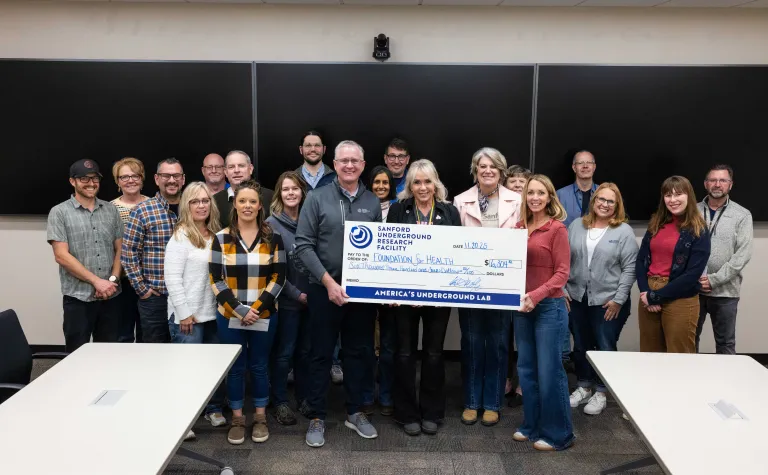Local photographer captures physics history in the Black Hills
For more than two decades, amateur photographer Dale Carter has been capturing images of the physicists who come to the Black Hills.
Photography is sometimes thought of as one part skill and one part luck.
Throughout his amateur photography career, Dale Carter has had both. More than once, he has found himself in the right place at the right time with the right skillset to capture the historic moment.
He snapped iconic photos of the huge flames that came roaring into Deadwood in the sweltering summer of 2002, when the Grizzly Gulch Wildfire brought slurry bombers to skim the treetops above town, as residents evacuated through the smoke and embers.
He also captured an early chapter in the history of physics in the Black Hills. In the wake of the closure of the Homestake Gold Mine, physicists from around the world converged on the town of Lead in the fall of 2001 for a conference on the potential for underground science in the former mine. Carter made his way to the local hotel where the conference took place. He grew up reading Carl Sagan and science magazines and jumped at the chance to rub shoulders with the global scientists gathered in Lead.
“You don't get to talk to world-class physicists very often,” he said. "I had to come up and get their pictures. They were all very gracious and welcoming. There were Harvard professors and leading researchers, and it was just unbelievable the crowd that was here.”
A small sampling of the many photos includes:
- Kevin Lesko, a senior physicist in the physics division of the Lawrence Berkeley National Laboratory and former spokesperson for LZ. In the years to follow the 2001 meeting in Lead, Lesko’s tireless advocacy in front of the South Dakota Legislature and in Washington, D.C. would help secure the approvals that made SURF possible.
- Richard Gaitskell, a professor of physics at Brown University and the current spokesperson for the LUX ZEPLIN (LZ) experiment, the world leader in the hunt for WIMP dark matter. Gaitskell helped pioneer the liquid xenon time projection chamber technology employed by LZ and its predecessor, LUX, at SURF.
- Baha Balantekin, a professor of physics at University of Wisconsin-Madison, who in the decades to follow the 2001 meeting, would go on to become one of the pioneers of neutrino astronomy, helping to show the world the value of using neutrinos to study the cosmos. Balantekin was also an early advocate for a workshop series that Carter would later attend and photograph.
- Kenneth Lande, a professor of physics at Pennsylvania State University, worked alongside Raymond Davis on the Nobel Prize-winning solar neutrino experiment at Homestake. Lande became an early advocate for the creation of a national underground laboratory that SURF has become today.
- Steve Elliott, a senior researcher at Los Alamos National Laboratory who served as the co-spokesperson for the MAJORANA DEMONSTRATOR experiment at SURF and the LEGEND experiment at Gran Sasso in Italy. Both neutrinoless double-beta decay experiments pushed the scientific frontier in the search for this ultra rare process.
- Alfred K. Mann, helped pioneer the use of underground laboratories to measure astronomical neutrinos. His passionate advocacy for a deep underground laboratory in the United States played a major role in convincing others to push for the conversion of the former Homestake Mine into a world-class research facility.
- Bonnie Fleming, is Fermilab’s Deputy Director for Science and Technology and Chief Research Officer. An internationally recognized particle physicist with outstanding expertise and a world leader in neutrino physics, she leads all areas of science and technology at Fermilab. She also is on faculty at the University of Chicago.
Almost twenty-five years later, the vision the scientists expressed at that first conference in 2001 has come to fruition. The Sanford Underground Research Facility (SURF) is the deepest laboratory in the United States. SURF hosts world-class research in physics from the LUX-ZEPLIN dark matter search to the massive Deep Underground Neutrino Experiment (DUNE), under construction 4,850 feet below ground. The facility is also home to pioneering research in geothermal energy, astrobiology, engineering and more. (See more in this video about SURF.)
Those like Dr. Jaret Heise, the director of science at SURF and a physicist who collaborated with and studied under some of those pictured, marvel at the early history of SURF captured by Carter.
“This photographic time capsule captures a significant milestone in the journey to establish a national dedicated underground facility in the U.S. You can literally see and feel the enthusiasm of these believers in underground science, and appreciate the potential these early meetings held for developing something magnificent and essential to realizing multi-disciplinary science on a grand scale,” Heise said.
Next year marks the 25th anniversary of that first conference on underground science in the Black Hills. Carter’s effort to capture physics history in Lead did not end after the 2001 conference. He continued to take photos of visiting physicists over the next two decades becoming a mainstay at various conferences, including Center for Theoretical Underground Physics and Related Areas (CETUP*) workshop hosted by The Institute for Underground Science at SURF each year. His extensive collection now includes a wide range of students, post-docs, research scientists, and university professors, all at various stages throughout their careers.
“Carter’s pictures serve as an important reminder of the tremendous work of many, whose passion for compelling scientific questions led to the creation of the Sanford Underground Research Facility,” Heise added. “Many of those early advocates are now community leaders whose current work motivates not only continued use of underground laboratories but expanded space to match the pace and scale of scientific inquiry.”
For Carter the joy of capturing these images is also about the connections he makes with the scientists.
“They have always been so gracious in letting me take their photos. I also have lots of questions for them, and we have had some great conversations over the years,” Carter said.
This summer, The Institute for Underground Science at SURF is playing host to the International Conference on Interconnections between Particle Physics and Cosmology. Carter will be on hand at the event, continuing to capture the unfolding history of physics in the Black Hills.
